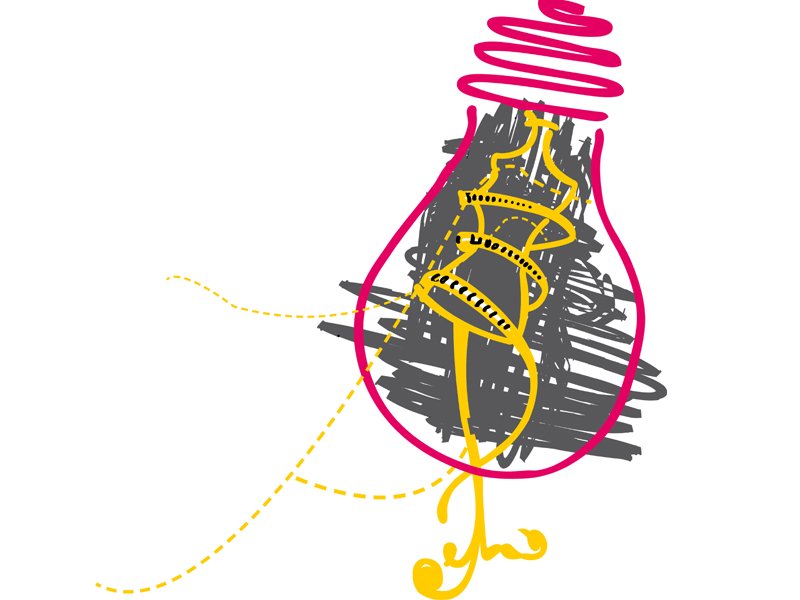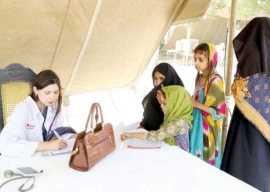
While our Prime Minister Mian Nawaz Sharif vowed to make the country’s energy crisis his government’s topmost priority earlier this month, garmi mein kharaab citizens all over the country have had no respite from the horrifyingly long power outages just yet.
From skilled workers to business owners, people are facing regular 10-hour power outages, with some breakdowns lasting as long as 48 hours! So how are our designers faring in this hot mess of a situation?
Karachi-based designer Rizwan Beyg describes how the outages are creating havoc. “The situation is very serious because it’s affecting the lives of all the employees as well,” says Beyg. “No bijli all night means karigars come to work groggy — it affects the final outcome. We have to rely on generators to run our karkhanas, but after three hours, they have to be shut down.”
Shehla Chatoor adds to this, explaining that running workshops on generators can be costly. “I have a back-up generator in my workshop, but it is very costly to run on generator,” says Chatoor. “Fabrics and other items get delayed in the market as they rely on electricity for production. The poor workers and small industries cannot afford to run on generators.”

Warda Saleem says the whole industry is affected. “We use machines that require a lot of power and the UPS is certainly not an option,” says Saleem. “The use of generators increases, which then affects the cost of products directly.” As a result of increased production costs, designers say that they are forced to increase the sale price of the product.
Lahore-based designer Fahad Hussayn says he is faced with an average of 16 hours of load-shedding. “It is a complete loss for any designer,” says Hussayn. “In the good old days it was one suit per tailor, but now it takes up to three days to make a suit!”
Rizwan expands that the load-shedding duration varies from one hour to all day. “The figures, in terms of losses, vary from a few thousand to Rs100,000 a week,” he says. “We work with generators but, with constant increases in fuel prices, the extra cost is added to the garment price, making it more expensive for the consumer and raising inflation.” He adds, “The government thinks that by raising fuel prices, they will be able to meet their circular debt. What they don’t realise is that it’s a spiraling effect that ultimately affects the consumer and finally their constituency; so, in the coming election year, there will be fewer votes.”
While all the designers hope and pray that this issue is resolved, Chatoor feels there is some good news. “Recently, I saw that KESC and SSGC have reached an accord on increase in gas supply, so I hope the problem will be resolved soon,” she says. “The government must address the issue of circular debt, theft, capacity increase and explore the use of coal for power generation.” She also feels that Pakistan uses expensive fuels for production of electricity, the cost of which is again passed on to the poor masses. “India, China and the US produce most of their electricity with coal, so why can’t we do the same?” she asks. “We have more than sufficient reserves of coal in our country.”
Rizwan, however, has no hope. “I don’t think there seems to be any political will,” he says. “Lahore has a $700 million bus system that it could do without and now Karachi has been promised one. We have buses — but we don’t have bijli.”
Published in The Express Tribune, June 18th, 2013.
Like Life & Style on Facebook, follow @ETLifeandStyle on Twitter for the latest in fashion, gossip and entertainment.
COMMENTS (11)
Comments are moderated and generally will be posted if they are on-topic and not abusive.
For more information, please see our Comments FAQ

















Boco seems to be taking this article waaay too seriously
@Lolz: I'm sorry but that makes no sense.
@Boco, for a change why dont you go visit designers and their karigaars in this hot, hot weather, it might serve the purpose right.
I cannot understand as to why Pakistani people like to be taken advantage of from the Taliban and getting killed corruption from their political leaders and being denied the basic rights of electricity from their utility companies like KESC. People in the rest of the world have a limit then they go for demonstrations from Libya, Turkey to Iran. All demonstrations do not have positive results but at least it shows the people are not afraid tp protest. I see Pakistanis people as complaining a lot throwing the blame game at each other but very hesitant to get involved and bring change in the deplorable conditions they are forced intocan someone out there please expplain to me the reason?
Fahad Hussayn and company can check Liberty Market Union 1 for free help to fight electricity shortages !!
I am writing down the losses that various electric supply corporations incurred, primarily due to theft of power, between 2008-2013. You be the judge where the power theft is at the highest:
FESCO Rs. 600 million GEPCO Rs. 360 million LESCO Rs 2.35 billion MEPCO Rs. 280 million IESCO Rs. 3.66 billion SEPCO Rs. 7.47 billion HESCO Rs.16.17 billion PEPCO Rs. 59 billion KESCO Rs. 90 million
I am surprised to see that Karachi has the lowest losses. Much lower than Hyderabad, Islamabad, Lahore etc.
The performance of KESC is decreasing in every summer and winter, while the electricity tariff is increased round the year.
The is the formula which KESC has adopted - Performance -Anti-Clock-Wise, increase in electricity tariff - Clock-Wise.
@anonymous: Hi, which of the above mentioned designers are you? I'm not sure if you and I have read the same article because I cannot understand how you can take away what you did from this piece of writing as it is centrally focused on the economic troubles these designers go through because of power outages and how their production and bottom line is affected, it hardly even mentions the working conditions of their employees except in a passing remark on how their employees are 'groggy' due to lack of power supply. The author probably called upon a few of her designer friends and wrote about the problems they face because of power outages to fill some space/meet a deadline, I cannot see how this article would find an audience with anyone its just lazy writing (yes these designers are affected by it, everyone is affected by it so what is the angle?). While we are at it lets discuss the working conditions/wages of the workers employed by these designers as it seems to hardly ever make any noise and some designers (SanaSafinaz) have also been reported saying how their outfits cost them basically nothing. So please put a bandage on your bleeding heart because this article warrants nothing more than an eyeroll.
these overpaid/under-talented designers employ hundreds of people, so one should care about working conditions being affected. unless of course you're a prince/princess with a big strong generator and no qualms about letting the less fortunate suffer through the boiling without sparing them a thought.
Yes, I really care about what problems these overpaid and usually under-talented designers face during power outages. Well done!